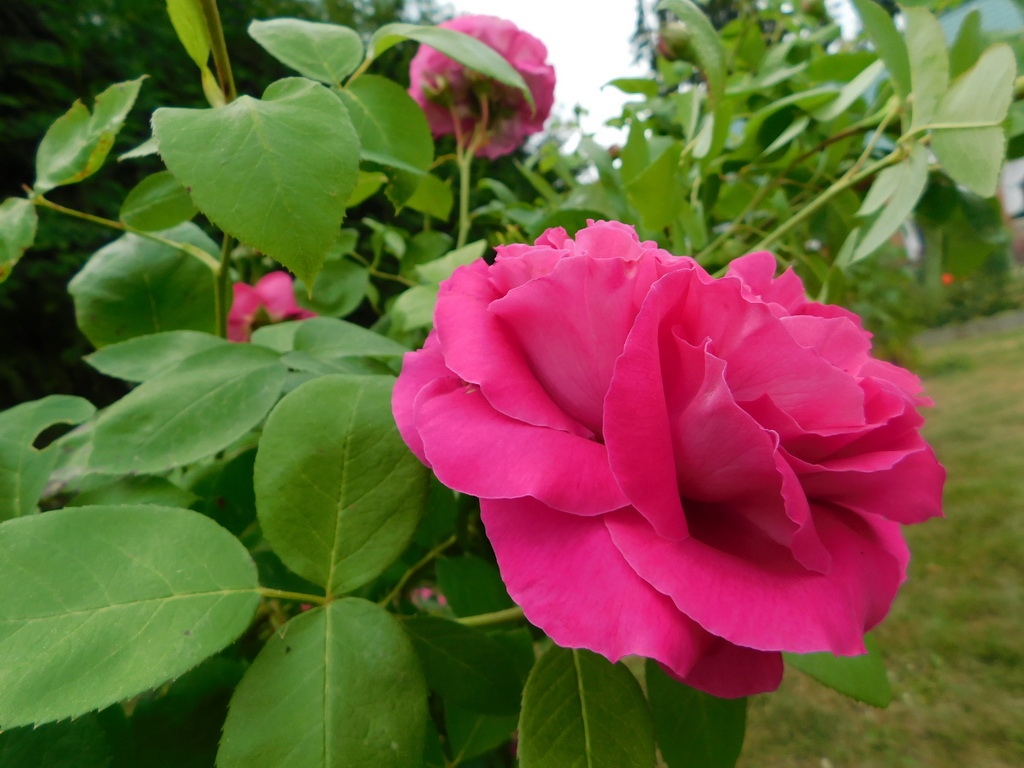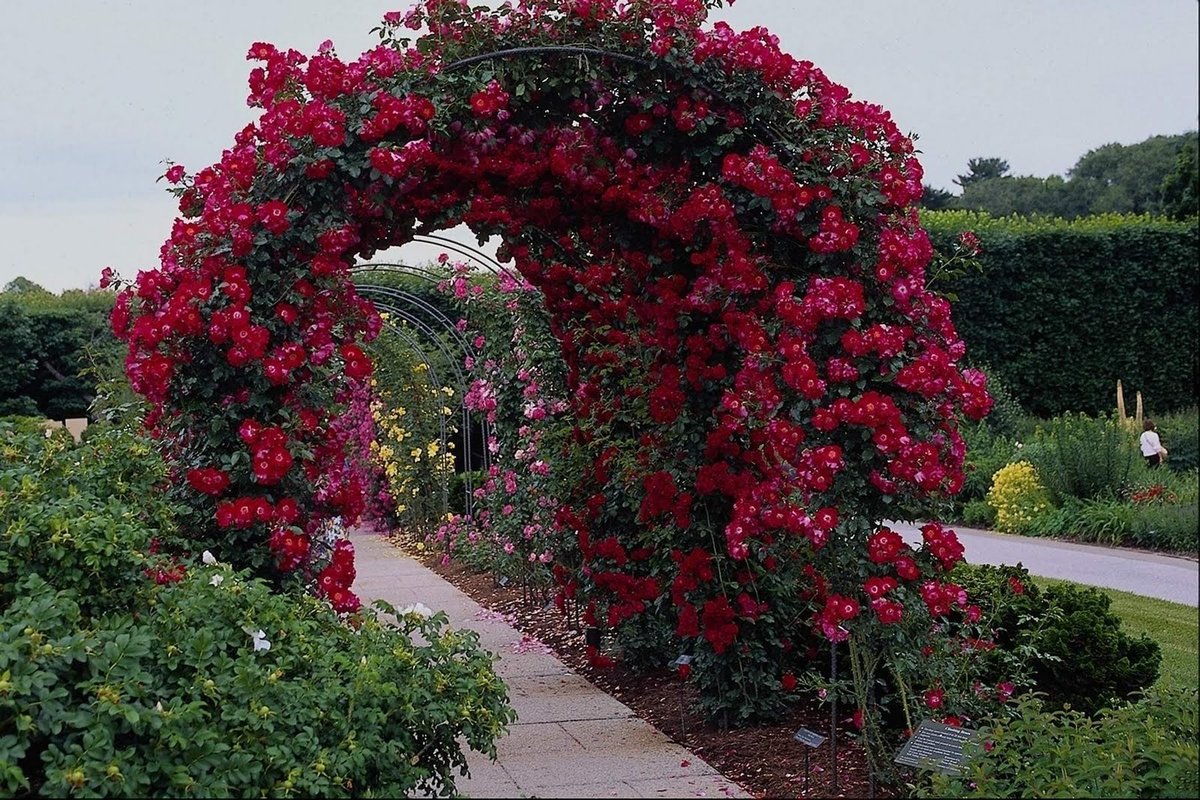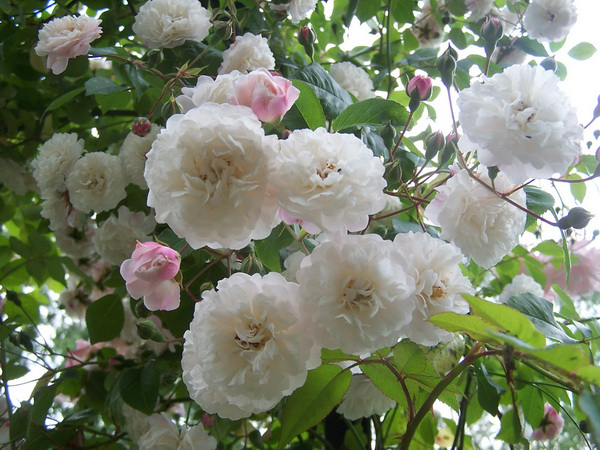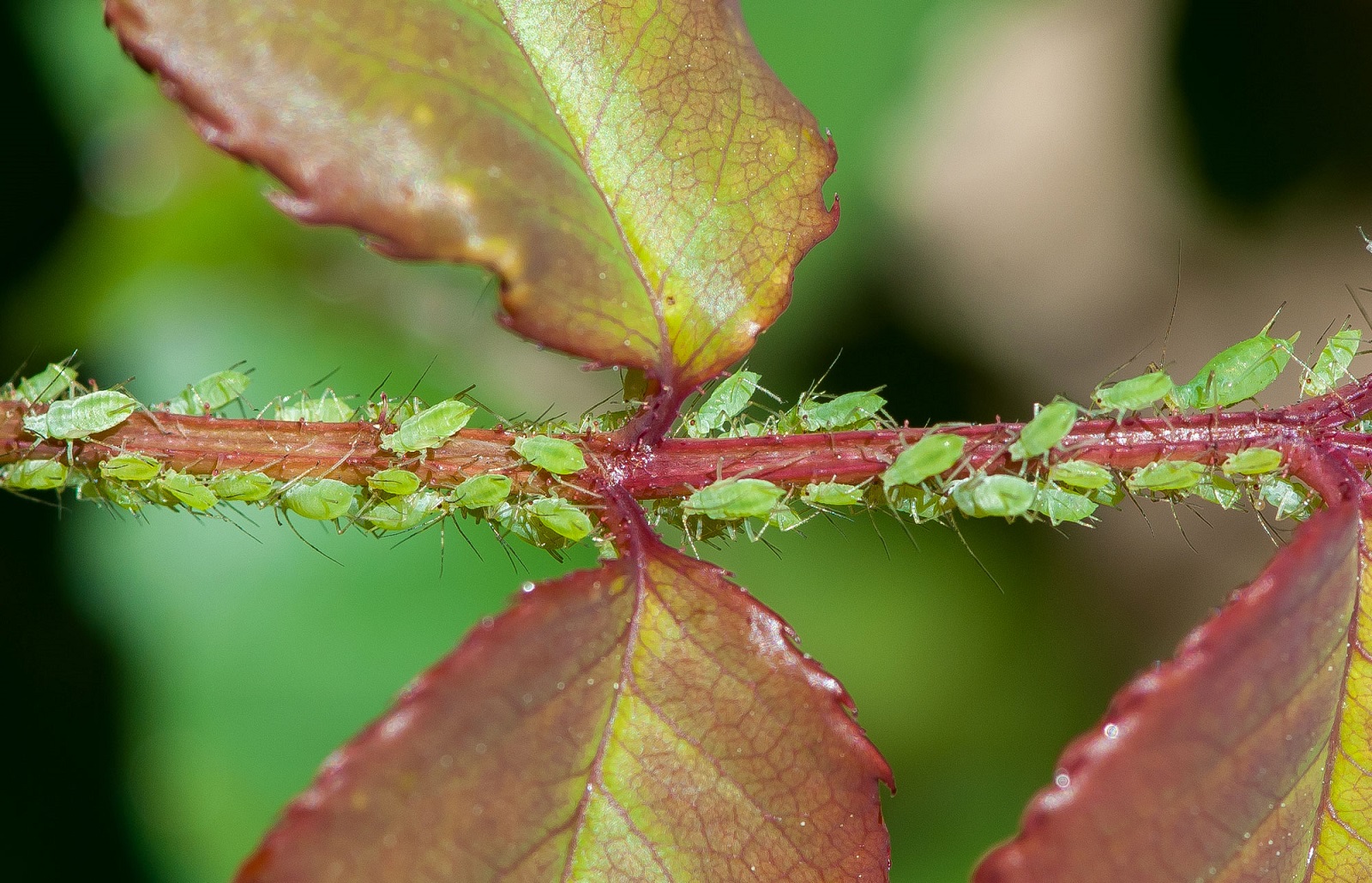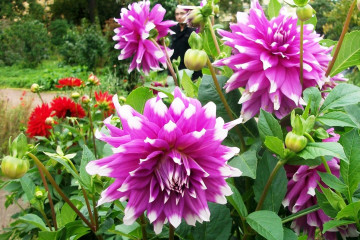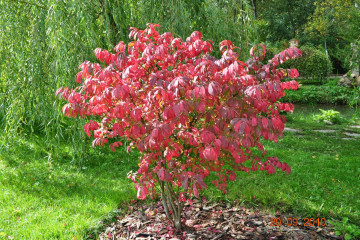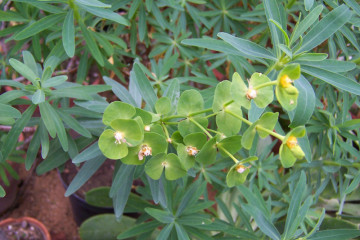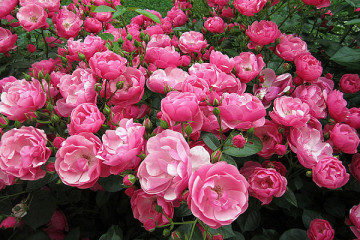Rose without thorns - what are, climbing and other types
Content:
The thorny growths on the stems of the queen of flowers discourage many gardeners from caring for her. Straight, hook-shaped, triangular, subulate spines interfere with enjoying the incredible beauty and incomparable aroma. However, the dream of flower growers - a rose without thorns - has long become a reality.
Rose without thorns - what does it mean
Thorns give the culture a special charm, but make it difficult to care for the flower. Wise nature has provided on the stems and leaves of the garden beauty "weapon" against rodents. Another purpose - through thorns, the plant maintains water and heat balance.
But lush-flowering roses with smooth shoots were also bred. This is a special landscape gardening group that has "lost" its thorns, but not varietal qualities.
Spines may be absent altogether, or be in the form of small and soft growths. They are located closer to the ground, then, as they move along the stem to the flower, the number of thorns decreases.
Advantages and disadvantages
The indisputable advantage of the studless varieties is their easy care: no scratches on the hands, no torn clothes.
Other benefits:
- Beautiful bush shape.
- Bright leaves.
- Abundant, long flowering.
- Propagate well by cuttings.
- Are restored after freezing.
But there are also disadvantages:
- Such species are afraid of prolonged rains.
- Flowering is the only one in the season.
- More susceptible to fungi and infections than thorny varieties.
- Winter is hard to bear.
But a thornless rose is not uncommon in cold regions. There it is grown, taking care of a good shelter.
Types of thornless roses
All the main types of roses are represented in the thornless "family". There are 9 groups in total:
- Repaired - hybrids with double flowers have been known since the 19th century. They have a persistent aroma, the height of the bush is up to 2 m.
- Hybrid tea - crossing remontant and tea varieties. The buds are single and collected in clusters. Breeders have bred a lot of varieties, there are whole series.
- Polyanthus - small inflorescences with a faint odor.
- Floribunda is a complex selection of polyanthus, Pernetsian and other species.
- Patio - abundant flowering bushes of half a meter in height.
- Climbing - characterized by the flowering of last year's shoots. Tall (3-5 m) plants are allowed on gazebos, hedges, and decorate the walls of houses.
- Groundcover. Stems are arched, drooping, spread along the ground.
- Shrubs - shrubs reach 2 meters. The branches are lignified, tolerate frost well.
- Stamp - like a tree.
Non-thorny roses are planted in flower beds, front gardens, parks and summer cottages. In landscape design, they are used in the same way as the classic types: as a free-standing bush near a bench or house steps, or in a group on spacious lawns.
Popular varieties
The variety of types of roses without thorns pleases. The most popular are listed below:
- Alberic Barbier. A variety for warm regions. Single or in brushes, flowers bloom in bright apricot color, fade to cream. Then they turn white, but on arches and pergolas, the Alberic rose looks spectacular.
- "Lacorn" is a famous rose without thorns.It is a stunted shrub with large pink flowers.
- Fantin-Latour. Scourges up to 4 m long from bottom to top are strewn with flowers of a delicate pink color. The buds consist of many petals, in the middle there is a button of tightly folded ones.
- "Wartburg". A classic, profusely blooming rose. The climbing variety is called a pink fountain - there are so many flowers that you cannot see the foliage.
- Mme Alfred Carriere. A variety for lovers of the purest white color and delicate aroma. This rose is widespread all over the world. In the southern regions it blooms all year round. Scourges spread out to 6 m. The plant is unpretentious to the soil.
- Maman Turbat. A climbing species with small flowers; in Russia it hibernates without shelter. The name of the variety has been familiar to flower growers since the middle of the last century.
- Maria Liesa. An aromatic, non-capricious rose with a mass of small flowers of a simple form. In the description, it is recommended to plant it in the form of a hedge.
- Rosalita. A musky hybrid with flowers 5 cm in diameter. Color - pale yellow. It is famous for its luxurious brown-green foliage.
How to choose
So that labor and money are not wasted, you need to choose the right variety. Florists come from the region of residence:
- In the middle and northern latitudes, shrub, ground cover species, and special park crops are planted. Floribundas and Canadian roses thrive in colder climates.
- Florists pay attention to the seedling - grafted or pure hybrid, what kind of soil it needs.
- They buy two-year-old plants.
- Before planting, young roses with bare roots are disinfected, even if they are from the nursery.
In the southern regions, there are no restrictions on crop varieties.
Growing: care features
Thornless roses do not differ in special rules of agricultural technology. Rather, it is easier to care for ornamental plants, because they do not have thorns.
Place and soil
The site must be protected from drafts. Although roses love sunlight, it is still better to plant the bushes so that they are in partial shade for several hours. You cannot place the culture near brick walls and metal fences.
The soil is chosen loose, well-drained. Acidity - 6.5 pH. If varieties prefer sandy soil, the seller informs about it. Lowlands and soaks for roses are not suitable.
Watering and feeding
Excessive moisture damages the roots of the plant. A rose will survive drought better than constantly “wet feet”. In a dry summer, once a week, a bucket of water is poured under the bush.
Watering is combined with top dressing. In the spring, nitrogenous fertilizers are applied, throughout the season they stimulate abundant flowering with phosphorus. But potash compounds also affect the formation of buds and healthy greenery.
Pruning and replanting
By pruning, form a graceful bush shape. A radical one is carried out in the spring, before the young growth appears. Cut out old shoots, dried up and diseased branches. The middle of the bush is thinned out so that the plant is evenly illuminated by the sun and ventilated.
Wintering
Thornless roses in the northern regions do not survive without shelter. Before wintering, they are given charging watering, the whips are removed from the trellises, laid on the ground, spreading roofing material, or in grooves according to the principle of wintering grapes. The roots are mulching.
In warm places, it is enough to warm up a hill of earth under a bush.
Blooming thornless roses
Many varieties of roses without thorns bloom once, but for a long time. During this period, plants require moisture and fertilizers. The bushes are watered with heated in the sun, settled water, when the earth has dried out by 3-5 cm. The norm for an adult plant is a bucket per bush, climbing species are poured 15 liters of water.
After irrigation, the soil is weeded, weeds are removed. A dense crust should not be allowed to form on the ground - it does not allow the air necessary for the roots to pass through.
Phosphorus and potassium compounds, as well as microelements: iron, manganese, boron are chosen from top dressing. Chicken droppings and mullein are suitable, but in smaller quantities than in spring.
What to do if the rose does not bloom
The rosary is not happy with the color when the owners make mistakes in leaving. Reasons why there are no buds:
- Little light.
- There is not enough moisture.
- They feed poorly, or apply too much fertilizer.
- Do not remove weeds, do not loosen the soil.
- Incorrectly cropped.
Another reason is that the culture has run wild. In grafted roses, wild shoots appear from the root. They need to be removed.
You can invigorate the flower with the composition: dissolve 1 tsp in 5 liters of water. magnesium sulfate, ammonia and soda. Pour at the root.
Flower propagation
Thornless roses are propagated in traditional cultural ways. At home, only the seed method is not rational.
How to propagate a flower in your garden:
- Graft. As a rootstock in the spring, take a rosehip, or a varietal bud with a fragment of the stem is grafted onto a cultivated rose in July.
- Division of the bush. In early spring, an adult plant is dug up, the roots and stems are cut by 1/3. Divide the bush into parts - in each part, a fragment of the rhizome and 2-3 shoots are left. They are seated in other places.
- Layers. A groove is dug, covered with sand and compost, last year's shoot is placed in a trench so that the top of the stem remains outside. Strengthen the layering with a bracket, cover it with earth. In autumn, the main stem is cut off from the mother bush, the cuttings are dug out with the roots, and transplanted.
- Cuttings. In the summer, semi-lignified shoots are cut with a thickness of 5 mm. There should be 3-5 buds on the stem. The upper cut is even, the lower one is at 45 °. Rooted in water, potatoes, pot of soil. The stalk with roots is planted in a dish, looked after. He hibernates in an apartment, in the spring he is transplanted to a permanent place.
Diseases and pests
Roses suffer from fungal infections: powdery mildew, various spots, rust. Pathogens overwinter under a bush or in the buds of a plant. For treatment and prevention use "Topaz", "Chistotsvet", "Fundazol".
For caterpillars, aphids, ticks, insecticides are used. Healthy roses with thick glossy leaves are more resistant to diseases and pests. Therefore, good care is the prevention of disease.
Roses without thorns are a miracle of nature. They are varied in varieties and types. There is nothing unusual in leaving: watering, feeding, pruning, pest control. Reproduction methods are traditional: grafting, cuttings, layering.
